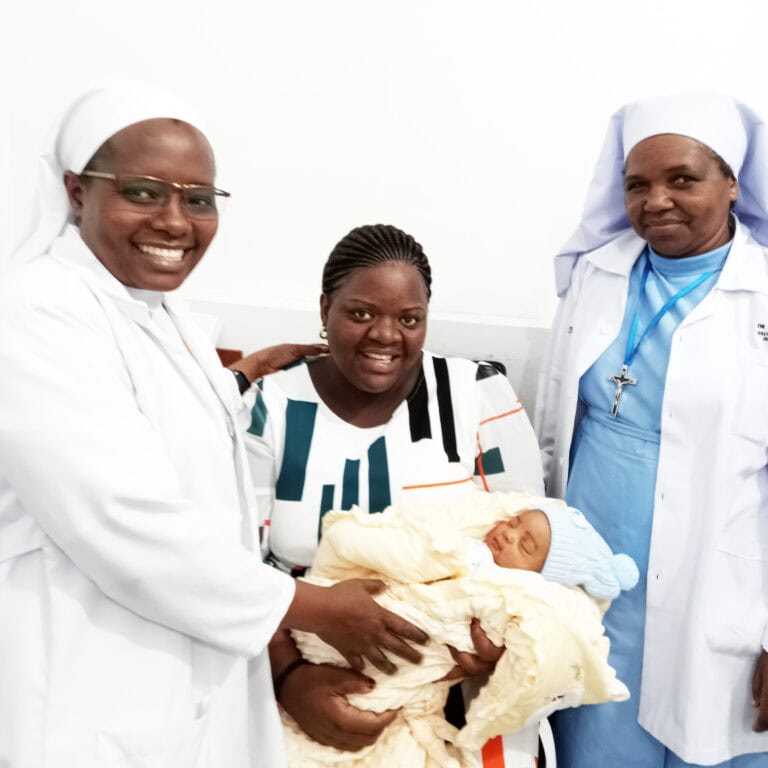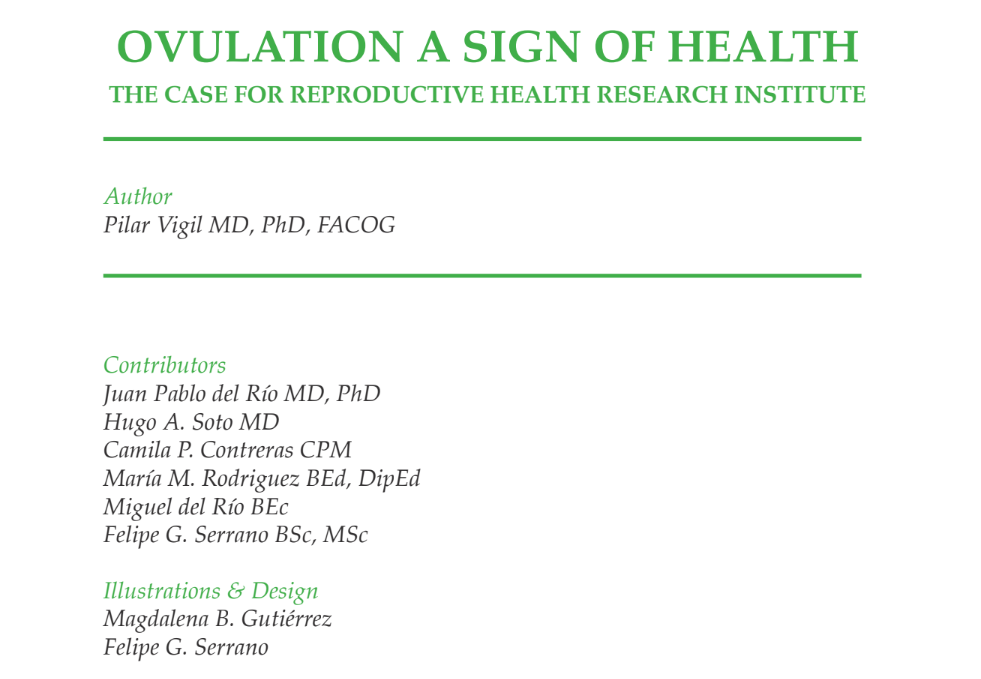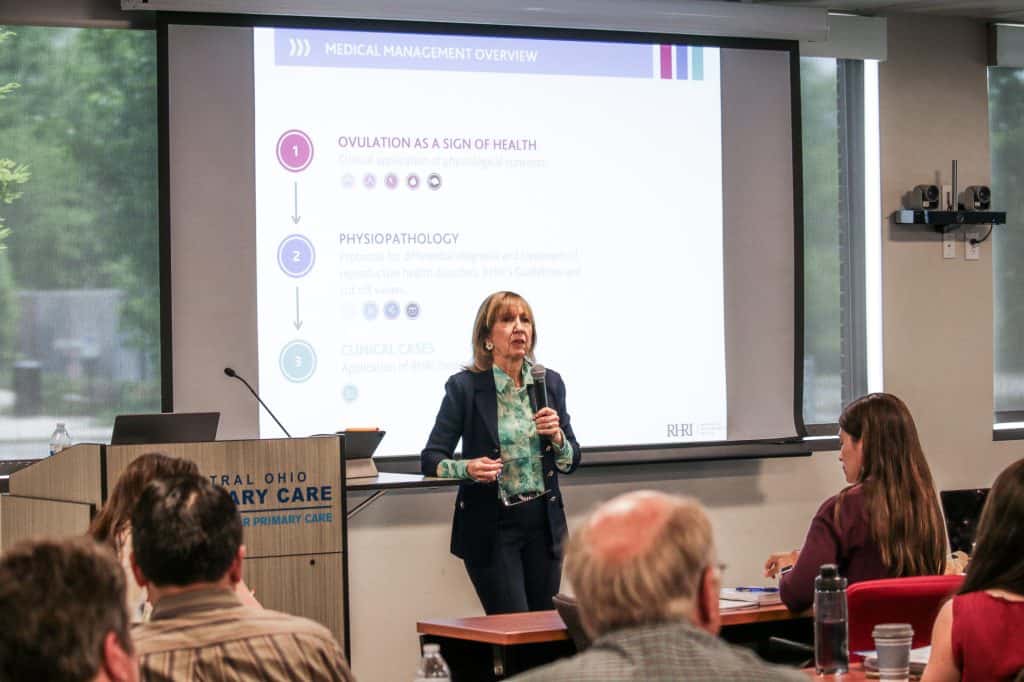Shining a Light on Secondary Infertility and Subfertility
When you’re deep in the midst of infertility, secondary infertility, or subfertility, it’s easy to feel like you’re alone.
But infertility is a common (and growing) problem. 1 in 6 people globally experience this heartbreaking condition. The good news is that FEMM-trained medical providers are having remarkable success helping women conceive by treating the root causes of hormonal disorders.
A recent example comes from Mwanza, Tanzania, where a team of physicians used FEMM protocols to treat an infertility patient. They’ve published a report on this case in the East African Scholars Journal of Medicine and Surgery entitled “Heartache to Happiness: Managing a Six Year Hormonal Subfertility with a Successful Rate of Conception.”
The authors of the report include Dr. Godfrey Kaizilege and Sr. Juliet Macharia MD., both of whom learned about FEMM from Dr. Danielle Koestner in 2022.
Dr. Juliet is completing an Obstetrics & Gynecology residency at the Catholic University of Health and Allied Sciences, where she treats her patients using FEMM medical protocols.
Dr. Kaizilege attended the 2023 FEMM Medical Management Masterclass in Ohio. He has since been working on integrating FEMM protocols into the Obstetrics and Gynecology Department at his own hospital in Tanzania.
Looking for Signs of Ovulation
Secondary infertility and subfertility generally refer to struggles to conceive after a successful pregnancy, or when everything “seems” OK.
In “Heartache to Happiness,” the authors report on a patient who had been trying unsuccessfully to conceive for six years. This woman’s symptoms included an irregular cycle length, menstrual bleeding that lasted longer than the normal seven days, an absence of cervical mucus, acne, and facial hair. She also struggled with obesity.
By observing this woman’s biomarkers, the team of doctors quickly realized that she was not ovulating.
They conducted extensive blood work to check on her hormone levels because, as the case report notes, “Hormonal disorders are the leading cause of infertility globally. . . Hormonal management helps promote ovum maturation, which triggers ovulation, increasing the likelihood of conception.”
The physicians knew that ovulation is a sign of health in a woman. In order to treat their patient’s infertility and other symptoms, they would first need to help her ovulate again.
Infertility and Secondary Infertility is Often Caused by Hormonal Imbalances
The team diagnosed the woman with insulin resistance and hyperprolactinemia—a hormonal disorder in which the body produces too much prolactin.
Prolactin is a hormone responsible for lactation, milk production, and some breast tissue development.
This woman’s hormonal imbalance prevented her from ovulating. Following diagnosis, the doctors crafted a three-part treatment plan consisting of medication, lifestyle modifications, and fertility education/charting.
Medication, diet, and exercise all helped to return the patient’s prolactin to normal levels. Lifestyle modifications were also used to help the patient address her weight. This was important because excess weight can affect fertility.
As the authors point out, “Obesity contributes to anovulation and menstrual irregularities, reduced conception rate, and a reduced response to fertility treatment.”
Finally, by learning more about her own fertility and by charting, the patient was able to track her menstrual cycle phases and identify the best times to try to conceive.
It didn’t take long for results to arrive. Three months into treatment, the patient began seeing cervical mucus that indicated she was ovulating. The next month, she was pregnant. She eventually gave birth to a healthy baby boy.
The Power of Fertility Awareness
In so many cases of infertility and secondary infertility, women begin to give up hope.
This woman had sought answers for so many years that she’d completely given up hope. Thanks to FEMM protocols, Dr. Kaizilege, Dr. Juliet, and their colleagues were able to treat her within a matter of months.
“This case is important for others to know because it highlights the importance of FEMM in teaching women how to manage their own bodies,” says Dr. Juliet.
“It also shows the association between obesity and hyperprolactinemia in cycles with no ovulation. We managed our patient’s high BMI, and we lowered her prolactin levels. This allowed her to ovulate and conception took place immediately.”
Infertility caused by hormonal imbalances is common. This case offers an excellent and important example for how to effectively approach such cases.
In the words of the report, “Fertility awareness, lifestyle changes, and medical management will bring back happiness to most women with subfertility secondary to hormonal disorders.”
As this case report shows, FEMM protocols aren’t just theory. They’re science and evidence-based—and they’re being used by real doctors to help real women get amazing results. This report from Africa just scratches the surface of what’s possible in helping women take greater control of their health.







